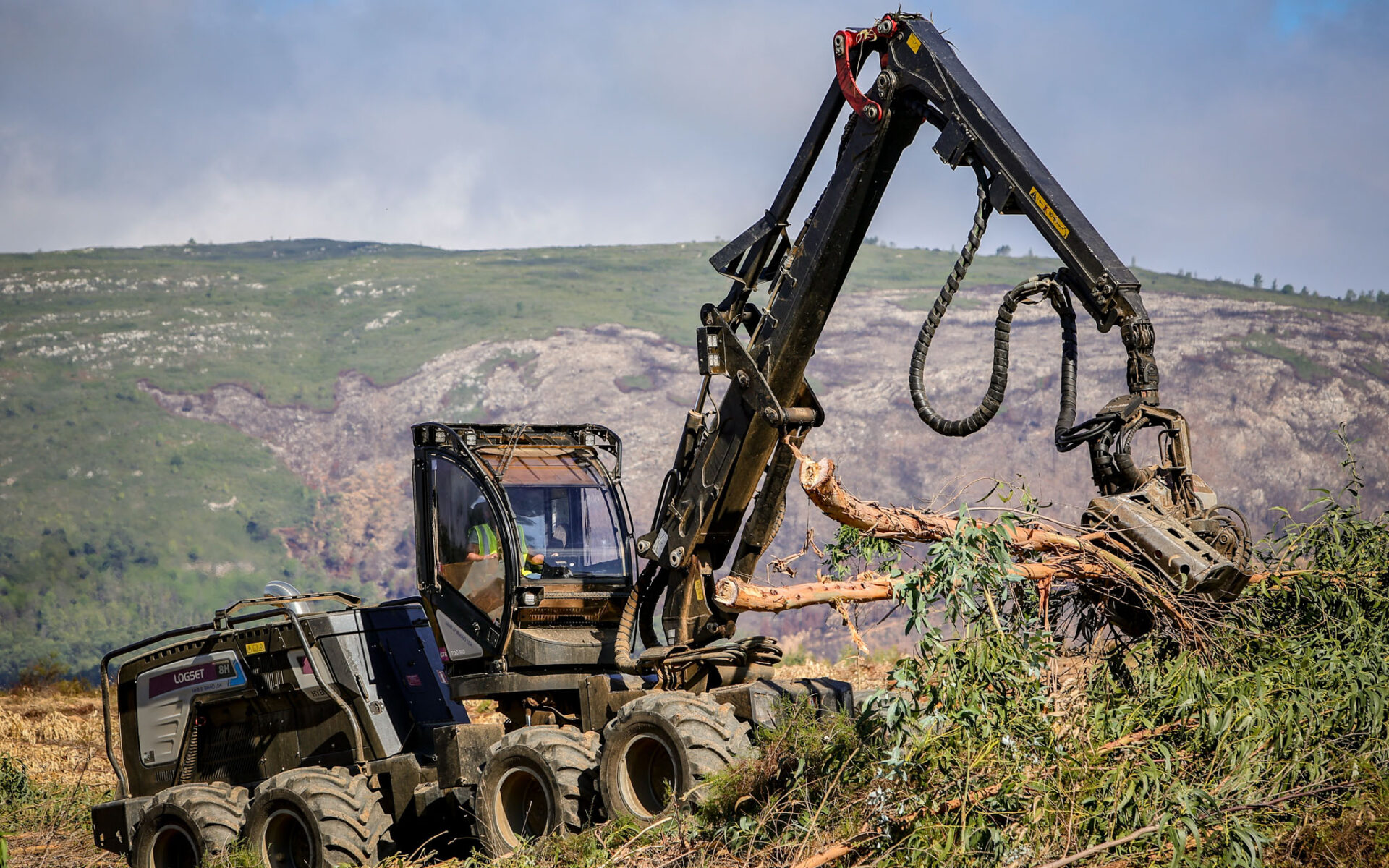Hybrid machines in the forest? Yes!
This machinery is the start of reducing our environmental footprint in forestry.c
By Pedro Silva
Procurement and Forest Development Manager at Altri Florestal
In response to the growing environmental pressures of the global market, as well as from many of the world’s governments and organizations, industrial machinery manufacturers have this century and particularly in the last decade begun to move towards building and selling machines that emit significantly fewer harmful gases (carbon monoxide, hydrocarbons, nitrogen oxides and fine articles).
This goal has already been met by building more highly developed and efficient (stage IV final and V) diesel engines, equipped with particulate filters and catalytic converters (AdBlue).

Nevertheless, we had (and will have) to “go beyond”, and this is why we are now seeing more and more zero-emission electricity-powered industrial machinery operating at factories and logistics and warehousing facilities. This includes handling machinery (cranes, fork-lift trucks) and also excavators, usually called rotary diggers. Many of these machines are, however, permanently connected by cable to the energy source. Altri’s manufacturing facilities and warehouses also has electrical equipment working around the clock. However, forest sites have more restrictions, of which the most easily identified is the lack of access to a power (electricity) source.
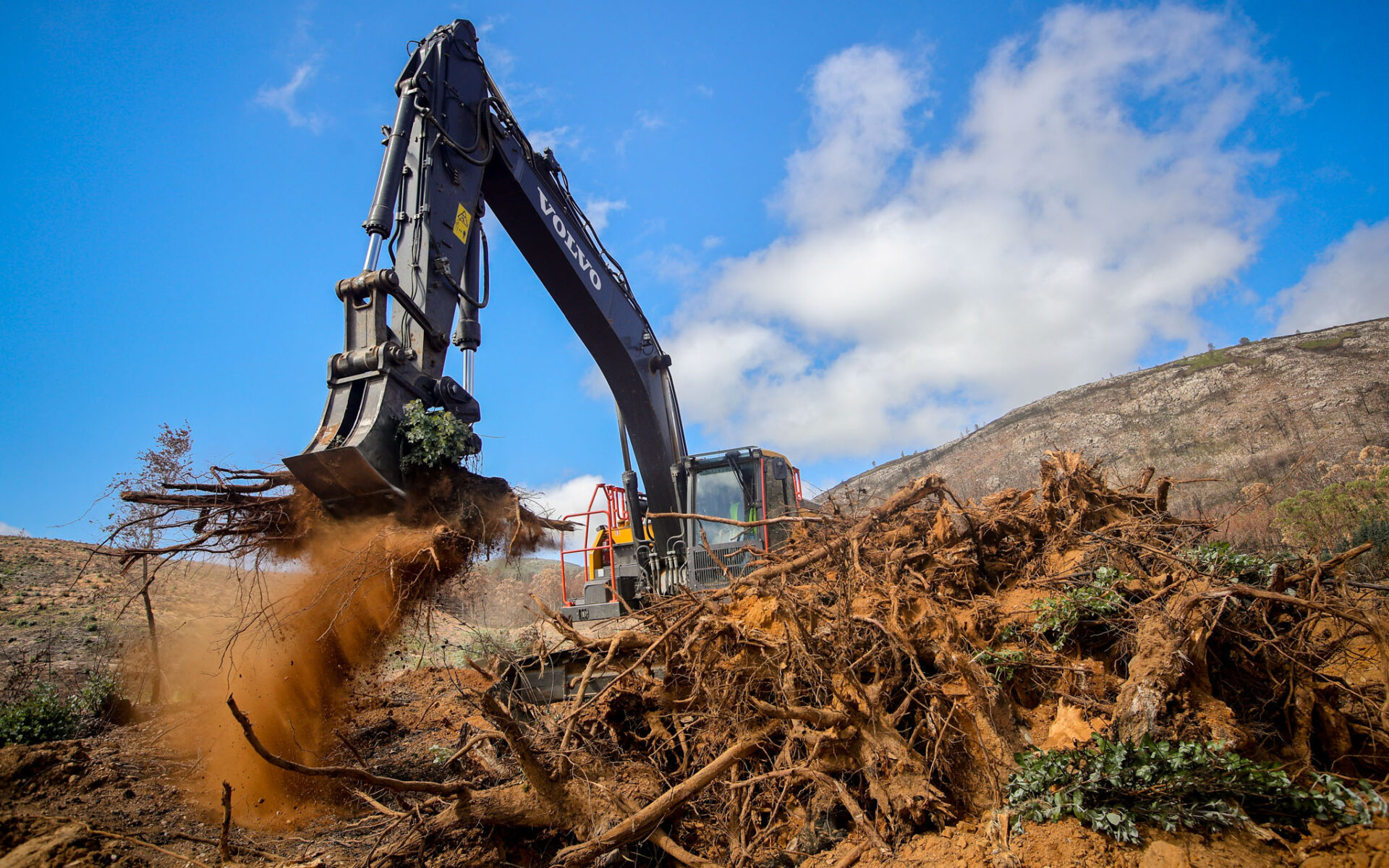
This renders it unfeasible to use electrical machinery with low autonomy or which needs to be permanently connected, such as those currently available on the market. This led to our decision, in 2022, to scour the market for equipment which would best meet the goals Altri had stipulated for its forests – lower harmful gas emissions resulting from our operations.
Of course, the equipment to be considered could not be over or under-sized, less productive or less resistant than the corresponding alternatives with combustion engines. Compliance with these requirements led to Altri opting for hybrids with coupled hydraulic technology to complement the diesel engine. The underlying idea which supports the majority of this kind of machinery is that the hydraulic system provides the boost necessary to complete a certain task, thus maintaining the diesel engine in steady state. As a result, smaller engines can be used, and the power and torque are optimised and improved, while their operation and rotations remain unaltered. All of these features combine to reduce consumption and thus emissions.

Having analysed the available selection of this kind of machinery, with a view to making a purchase, it was decided to establish partnerships with service providers who would be prepared to make this kind of investment, in return for a guaranteed amount of work per year, to offset their expenditure. The first pieces of machinery started working for us in 2022, but the majority were only available in 2023 given the difficulties and long waiting times for the delivery of the machines and the assembly of their safety packs which are a compulsory requirement in forestry operations. During this initial stage, Altri managed to establish partnerships with seven service providers, making a total of nine machines: five for logging and four for land preparation.
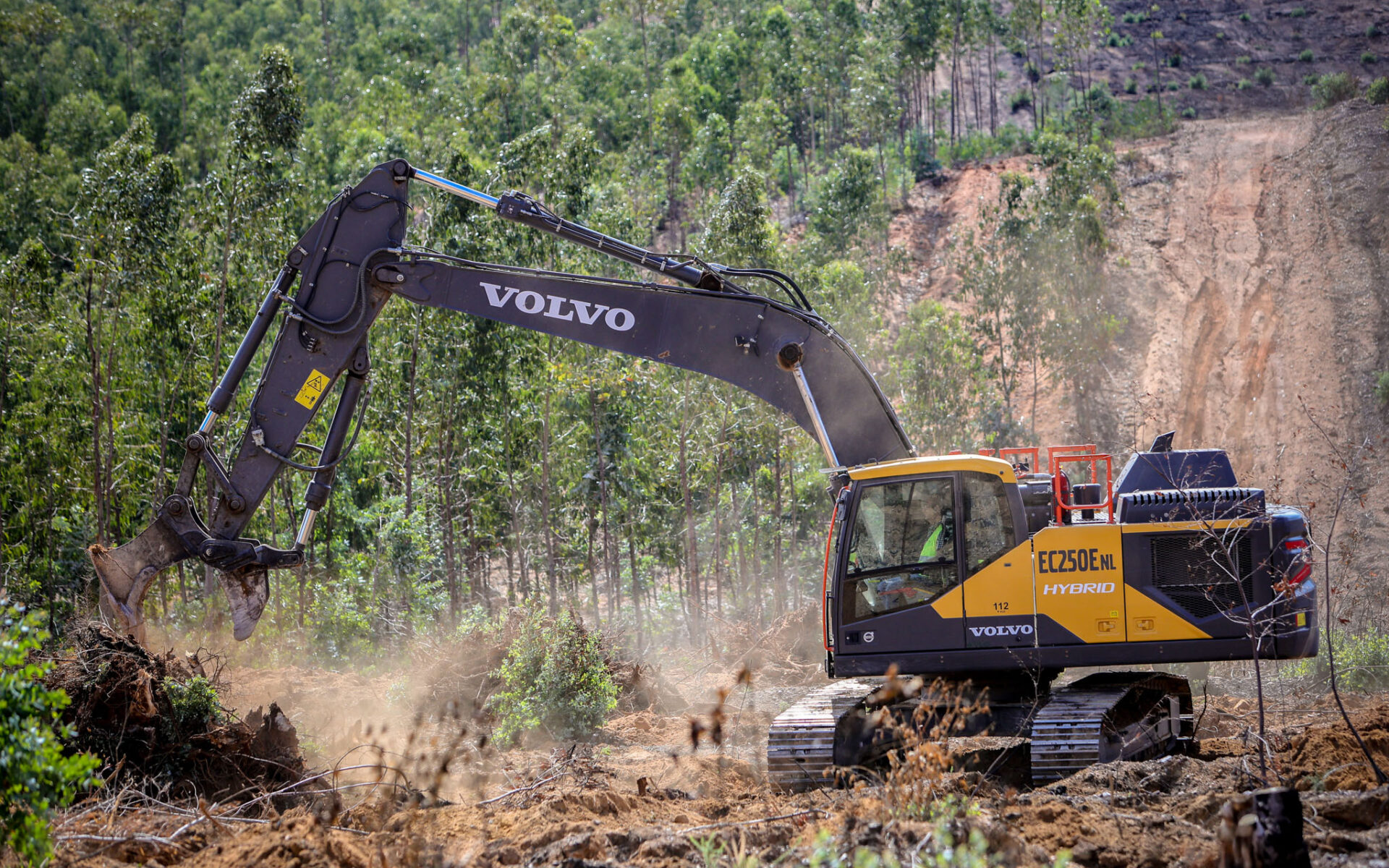
One fundamental aspect of introducing this machinery is being able to obtain data pertaining to production, productivity, consumption and emissions. Since only from the middle of this year will we be able to have a statistically relevant umber of machines operating on Altri properties, this task is currently still at the beginning but it is underway. Nevertheless, the case-by-case data obtained from the machine computers shows a decrease in consumption (more important in land preparation work). This data will of course have to be made with machines that have similar characteristics, but which are powered by conventional combustion engines.
Our goal for 2024 is to implement an automatic system that sends and receives all the above data by telemetry. Finally, I would like to say that Altri Florestal is keeping abreast of all the developments of a market which is going through great change, and we have therefore cultivated direct contacts
with the main machinery manufacturers represented in Portugal (Volvo, Ponsse, John Deere, Caterpillar, Komatsu, Hitachi), in order to gather the most up-to-date and accurate information available to the consumer market.
From these contacts we have gleaned that the first forestry machines will be for sale by the end of 2024 that will be fully electric without needing to be permanently connected to a power source and with increased autonomy. 2026 will see the first forest machines that are hydrogen-powered.
The first hybrid harvester in Portugal is working for Altri
Portugal’s first hybrid harvester – the Logset from Finland – set to work in the area of Abrigada, in Alenquer, operating for Altri Florestal, via service provider Manuel Moreira da Rocha & Irmão. The machine, costing around 500 thousand euros, was operating at an Altri Florestal site of approximately 100 hectares. Being the first one in Portugal, “the Finnish manufacturer had to reset some of the parameters on the sensors so that it would better handle the characteristics of the terrain in Portugal”, explains José Rocha, the manager of Manuel Moreira da Rocha & Irmão, adding that the reason for using this hybrid harvester is “to reduce CO2 emissions”, a requirement which Altri Florestal is imposing on its partners and suppliers.
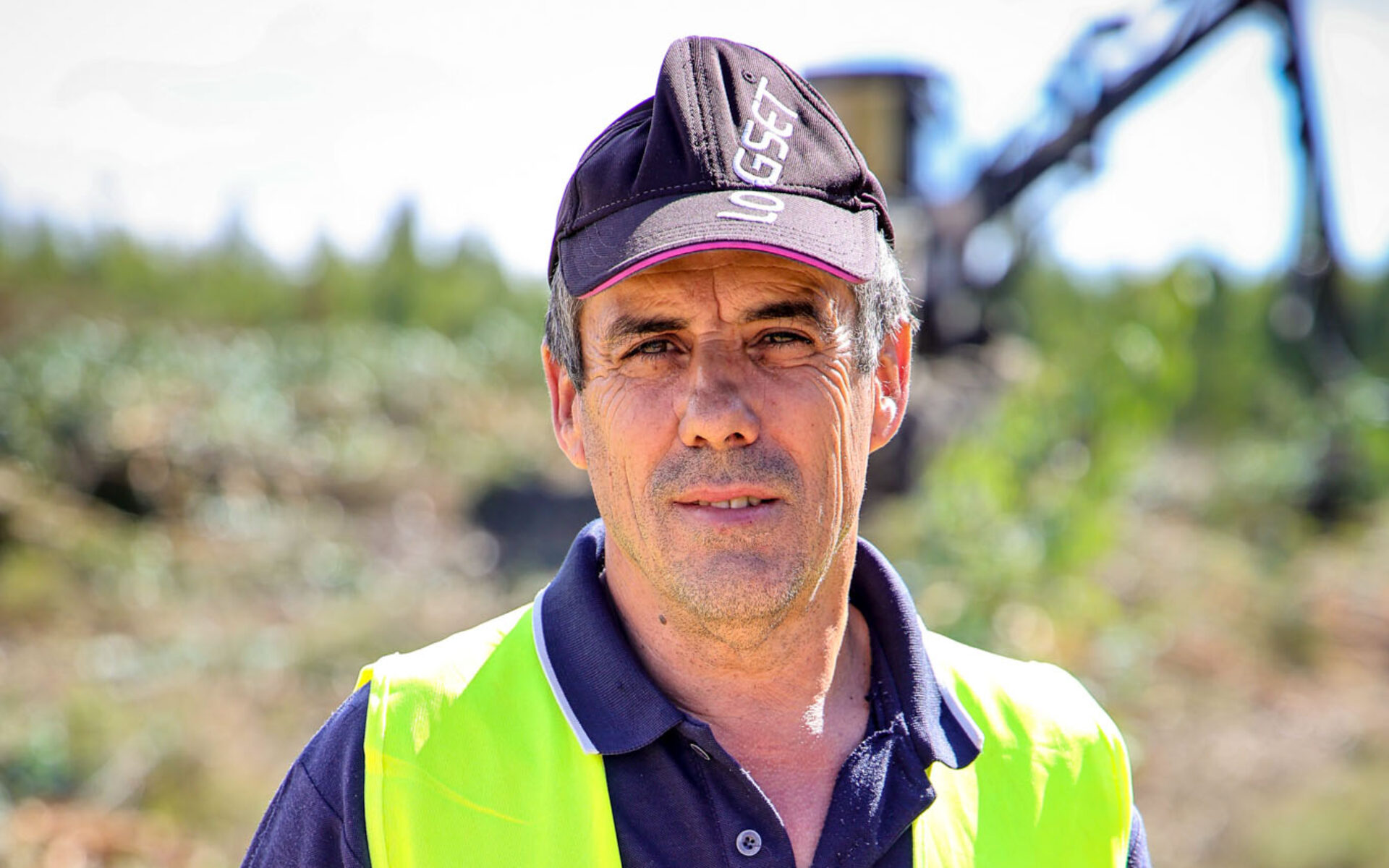
Ten kilometres away, another forest operator, +VLO – Lavouras do Oeste, was working with a Volvo EC250E hybrid, a 26-tonne crawler excavator which cuts CO2 emissions by 15%. This machine goes for around 175 thousand euros, but according to +VLO’s manager Nuno Almeida, “it’s very comfortable and ergonomic to operate, and uses an average of 3 litres less fuel per hour, in comparison to other machines of an equivalent size.”
José Rocha, manager of the company Manuel Moreira da Rocha & Irmão and Nuno Almeida, manager of +VLO – Lavouras do Oeste
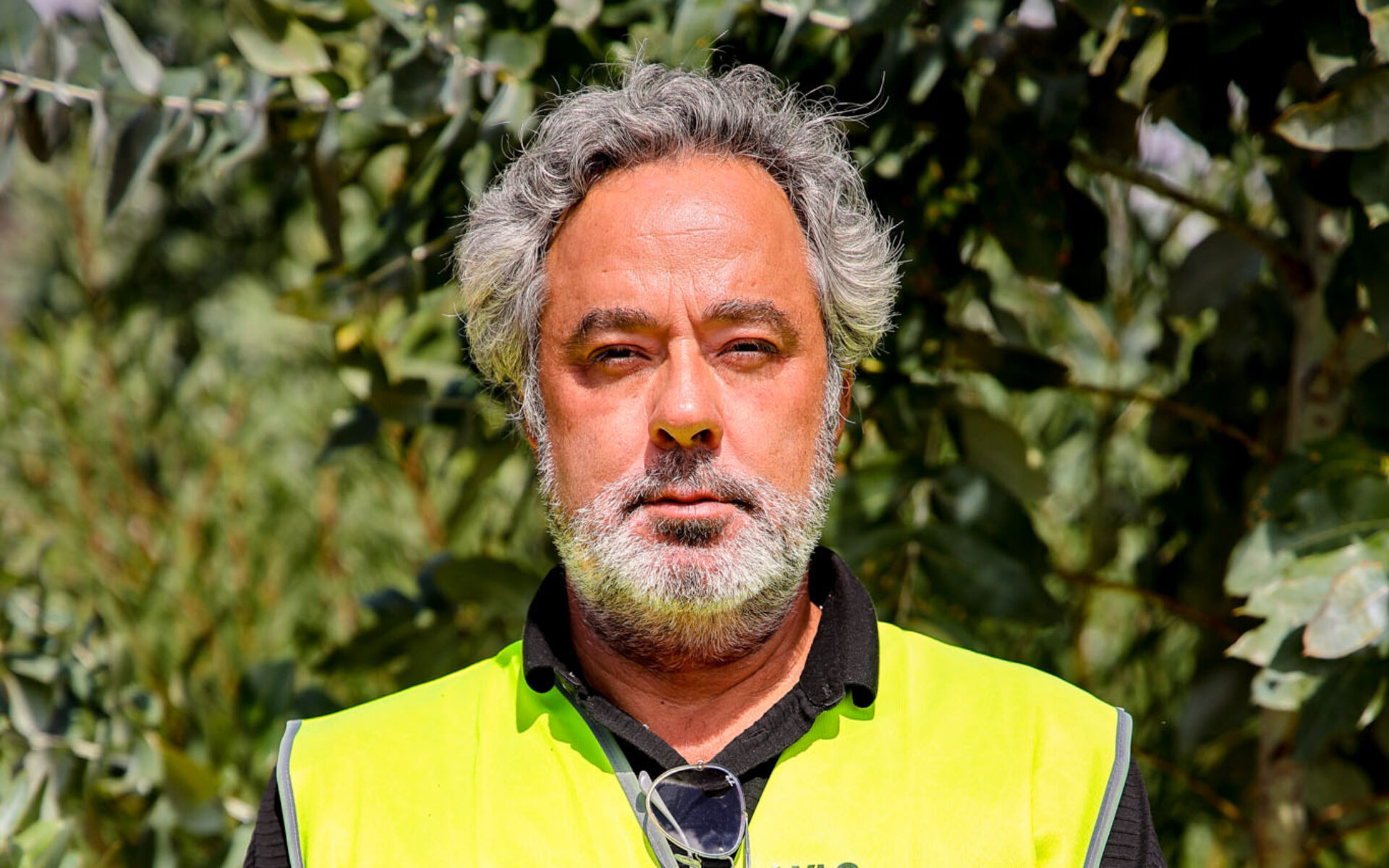
Will the forestry trucks of the future be powered by hydrogen or electricity?
Pedro Silva, the Procurement and Forest Development Manager at Altri Florestal, explains that transporting all the wood materials (wood, chips, biomass) for consumption across the entire Altri Group is an operation that involves hundreds of freight trips every day, to and from Altri’s factories.
While it’s true that the makers of these vehicles have already come up with models that are in testing and in production (particularly electric vehicles), vehicles of the type that are more suited to our transport needs – with five or more axles – are still at a very early stage of development and marketability. This is especially true when it comes to transporting heavy loads, as is the case with wood materials in Portugal (up to 60 tonnes). Weight greatly affects transport autonomy in today’s electric vehicles (much less distance covered). Hydrogen-powered vehicles could be more suited to transporting heavier loads over longer distances, but development of this kind of vehicle has been slowed down by the fact that there is practically no hydrogen supply network in Europe (nor worldwide).
In addition to the work being done on developing forest machinery, Altri’s vehicle fleet has also been earmarked for an overhaul in an effort to cut emissions. Altri’s medium-term aim is to introduce some vehicles that use alternative less polluting energy sources.


